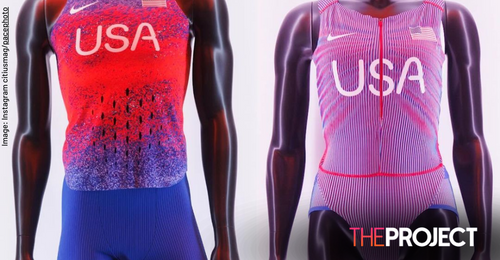The outfits, unveiled for the upcoming Olympic Games, drew attention for featuring a strangely high-cut panty-line, leading to accusations of prioritising a skimpy appearance over functionality.
US steeplechaser Colleen Quigley expressed her disappointment to Reuters, stating, “They are absolutely not made for performance.”
Lauren Fleshman, a former national champion, voiced similar concerns, questioning the suitability of the attire for professional athletes, writing on Instagram: “I’m sorry, but show me one WNBA or NWSL team who would enthusiastically support this kit.”
“This is for Olympic Track and Field. Professional athletes should be able to compete without dedicating brain space to constant pube vigilance or the mental gymnastics of having every vulnerable piece of your body on display.
“Women’s kits should be in service to performance, mentally and physically. If this outfit was truly beneficial to physical performance, men would wear it.”
Tara Davis-Woodhall, a long jumper, made a humorous comment on the outfit; “Wait my hoo haa is gonna be out”, highlighting her discomfort with its design.
This controversy reflects an ongoing debate within women's sports regarding attire.
Germany’s women’s gymnastics team notably took a stand against sexualisation at the Tokyo Olympics by wearing full-length bodysuits.
In response to the backlash, Nike has emphasised that it now offers unitard options with both briefs and shorts for the Olympics, a departure from previous offerings. The brand defended its range of apparel, noting the extensive options available for athletes.
While some athletes expressed concerns about the new design, others, such as middle-distance runner Athing Mu and sprinter Sha’Carri Richardson, modelled the outfits at the launch event in Paris.
Quigley advocated for custom tailoring to ensure a proper fit for athletes of all body types, a sentiment which has been echoed by Nike, who confirmed the availability of on-site tailors for Olympic and Paralympic athletes.





























